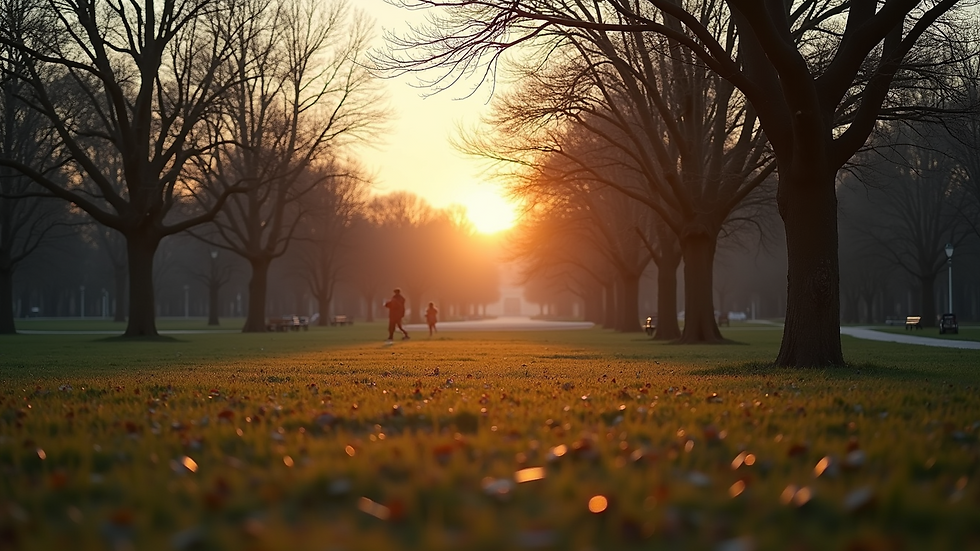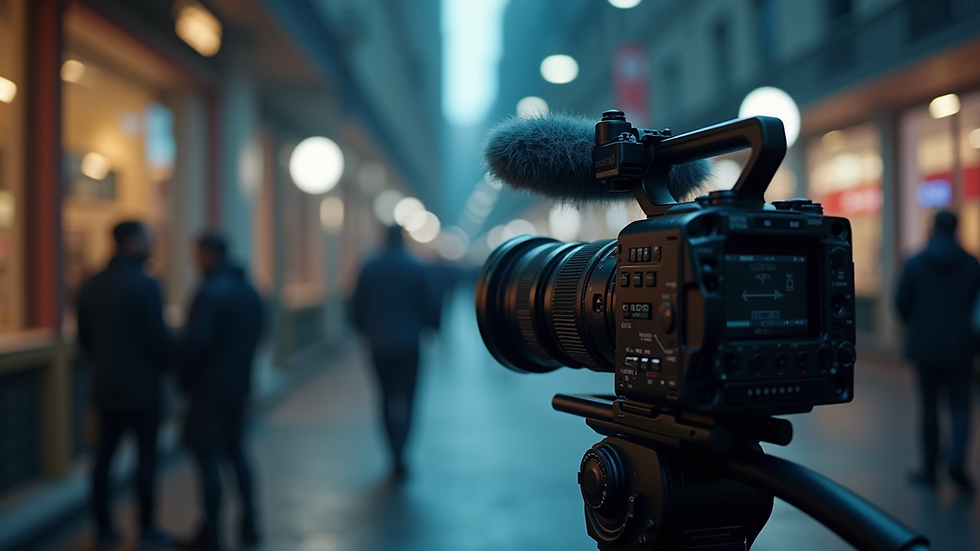Mastering the Art of Documentary Cinematography
- brianawarren7
- Jun 26
- 5 min read
Documentary cinematography is a unique blend of artistic expression and factual storytelling. Unlike traditional filmmaking, where directors can manipulate scenes for drama, documentaries capture real life as it unfolds. This authenticity presents both challenges and opportunities for cinematographers. In this post, we will explore essential documentary filming techniques, delve into the nuances of cinematographic artistry, and discuss how to tell compelling stories through the lens.
Understanding Documentary Filming Techniques
When you think of documentary filming techniques, consider the variety of methods and approaches that can enhance storytelling without sacrificing authenticity. The key lies in choosing techniques that align with the documentary's subject matter.
Interview Techniques: Framing interviews properly can significantly influence how the viewer connects with the subject. For example, using eye-level angles helps humanize subjects, allowing viewers to relate to them. Conversely, high-angle shots can create a sense of vulnerability.
B-Roll Footage: B-roll adds depth and context to interviews. It gives additional information about the subject, enhancing storytelling. A wide shot capturing the surroundings of your interviewee can envelop the audience in their world, while close-ups of relevant details can evoke emotions and provoke thought.

Wide angle view of a bustling city street that captures daily life. Natural Lighting: One major advantage of documentary filmmaking is the ability to harness natural light. Using it effectively can enhance mood and tone. Shooting during the "golden hour" when the sun is low can imbue shots with warmth and vibrancy, creating a visually stunning effect.
Observational Techniques: This technique involves simply observing the subjects without interference. It can provide an unfiltered glimpse into their lives. Manual focus and stabilization equipment can help maintain quality in these candid moments.

Eye-level view of an empty park at dawn, featuring serene surroundings. Dynamic Movement: Incorporating movement through techniques like handheld shooting can give an immersive feel to documentary films. It can create a sense of urgency or excitement, drawing viewers deeper into the experience. However, balance is key; too much movement can be disorienting.
By embracing these documentary filming techniques, creators can enhance their storytelling capacity, inviting viewers to connect emotionally with the subject matter.
The Role of Composition in Documentary Cinematography
Composition plays a vital role in documentary cinematography. It involves arranging elements within the frame to tell a story effectively. Here are some critical aspects of composition:
Rule of Thirds: Positioning subjects along the lines and intersections of a grid divides your frame into thirds, creating more engaging shots. This technique helps direct the viewer’s attention to significant elements in the frame rather than placing the main subject in the center.
Leading Lines: Employing natural lines in the environment, such as roads or rivers can lead the viewer’s eye to the subject. This technique can drive focus and create a pathway within the frame, guiding the audience through the story.
Framing: Utilizing foreground elements to frame the subject can add depth and context to scenes. For example, shooting through a doorway or window can impart a storytelling quality, suggesting separation or barriers.

Close-up view of an open doorway leading to a picturesque landscape. Negative Space: Don’t hesitate to embrace negative space. It can invoke a sense of tension or highlight isolation. A subject placed in a large expanse can evoke feelings of loneliness or vastness, making a statement about their environment.
Depth: Employing multiple layers in your composition can make your shot more visually interesting. By including elements both in the foreground and background, you create depth, drawing viewers into the story.
By mastering these compositional techniques, documentary filmmakers can elevate the visual storytelling experience and resonate more deeply with audiences.
What are the 7 C's of Cinematography?
Cinematographers encapsulate their craft through what is known as the 7 C’s of cinematography. Understanding these principles can aid documentary filmmakers in ensuring their work is visually compelling and impactful.
Choice: Selection of shots and angles should be deliberate and strategic. Think about what best represents the story and its characters.
Composition: As previously discussed, framing and arranging subjects within the camera’s view is essential for storytelling.
Color: Colors evoke emotions. Select colors that align with the narrative’s mood. A desaturated color palette can create a sense of nostalgia, while vibrant hues can illustrate joy and vitality.
Contrast: Utilize contrast boldly to draw attention to key elements in the frame. High contrast can create drama, while low contrast may suggest tranquility.
Clarity: Ensure the visual clarity of your shots. Blurry images can distract the viewer and detract from the message you are conveying.
Continuity: Maintain a consistent visual style throughout the film to avoid jarring shifts that can confuse the audience.
Cut: Editing choices can either enhance or detract from the narrative flow. Consider pacing carefully when transitioning between shots to maintain engagement throughout.
By employing these 7 C’s, aspiring cinematographers can achieve a higher level of professionalism and artistry.
The Significance of Sound Design
While visuals are undeniably crucial, sound design holds equal weight in documentary filmmaking. It serves as an emotional undercurrent, enhancing the viewer's connection to the narrative. Here’s how to integrate sound into your projects effectively:
Natural Sound: Capturing ambient sounds during filming can enhance the realism of your documentary. The rustle of leaves, distant chatter, or the city’s hum can transport viewers into the environment.
Voiceovers: Consider using voiceovers to provide context or docu-narration. A well-placed voiceover can tie together the visuals and add an emotional layer to the storytelling.
Music: Selecting the right music can set the tone for your documentary. Be sure to choose pieces that complement the visuals rather than overpower them.
Sound Effects: Adding sound effects for key moments can amplify the emotional impact or add dramatic emphasis to the story.
Mixing: Balance the various sound elements to ensure clarity. Sounds should work harmoniously, promoting a unified narrative experience.
Incorporating thoughtful sound design techniques can transform the viewer's experience, crafting a layered and engaging documentary film.
Crafting Emotion Through Storytelling
Ultimately, successful documentary cinematography relies on storytelling that evokes emotion and provokes thought. Here are some strategies for creating compelling narratives:
Character Development: Dive deep into your subjects, exploring their history, motivations, and struggles. Engaging character arcs will hook your audience and foster empathy.
Conflict: Highlighting conflicts—whether internal or external—adds depth to the story. It keeps viewers engaged and invested in the outcome.
Pacing: Consider how pacing affects emotional response. Slow, meditative scenes can evoke reflection, while rapid cuts can create excitement or urgency.
Unique Perspectives: Sharing uncommon viewpoints or untold stories can captivate audiences. Seek out unique angles that differentiate your documentary from others.
Resolution: Offer a resolution that feels organic to the story. Whether it is a climax, a confrontation, or a moment of understanding, ensure it aligns with what you’ve depicted throughout the film.
By focusing on storytelling that resonates emotionally, cinematographers can create impactful documentaries that leave an impression long after the credits roll.
With the skills and techniques discussed in this post, you are now equipped to begin mastering the art of documentary filmmaking. Each aspect—from camera work to sound design—contributes to forming an engaging narrative that will resonate with audiences. Dive in, embrace the challenges, and let your creativity flourish!



Comments